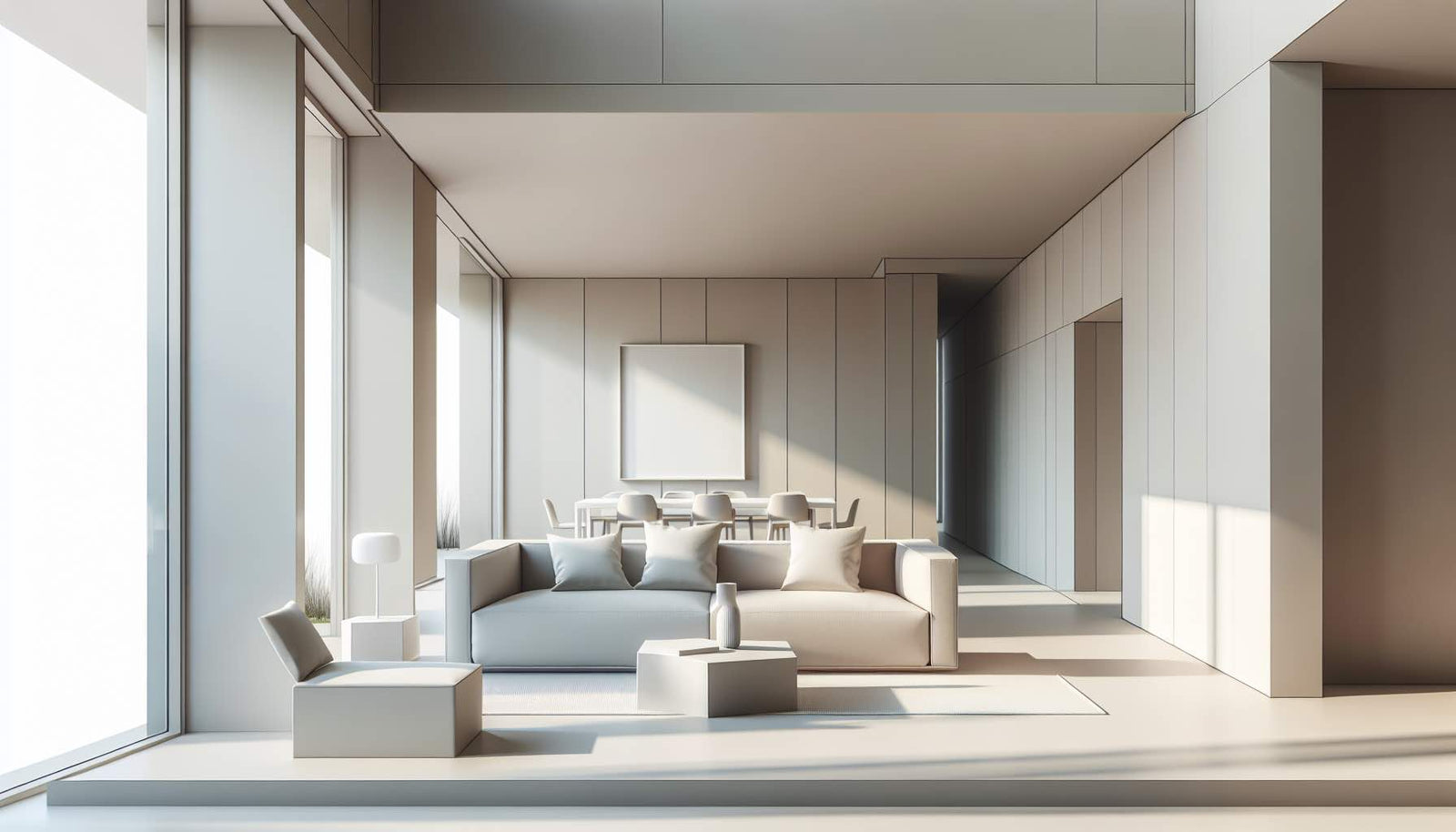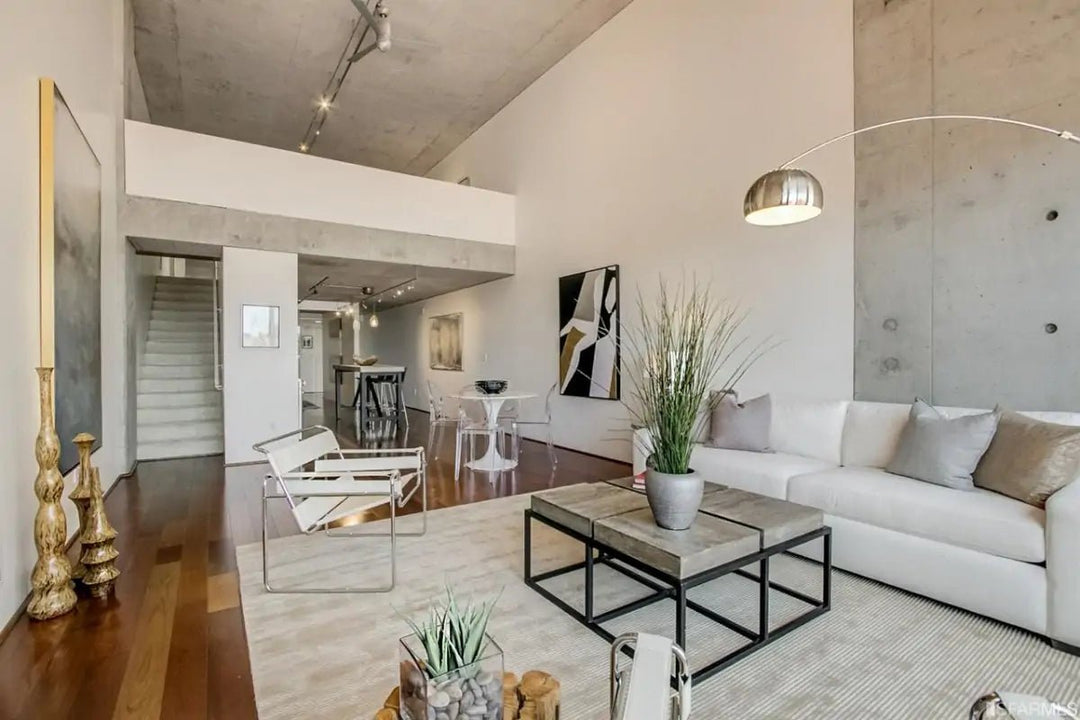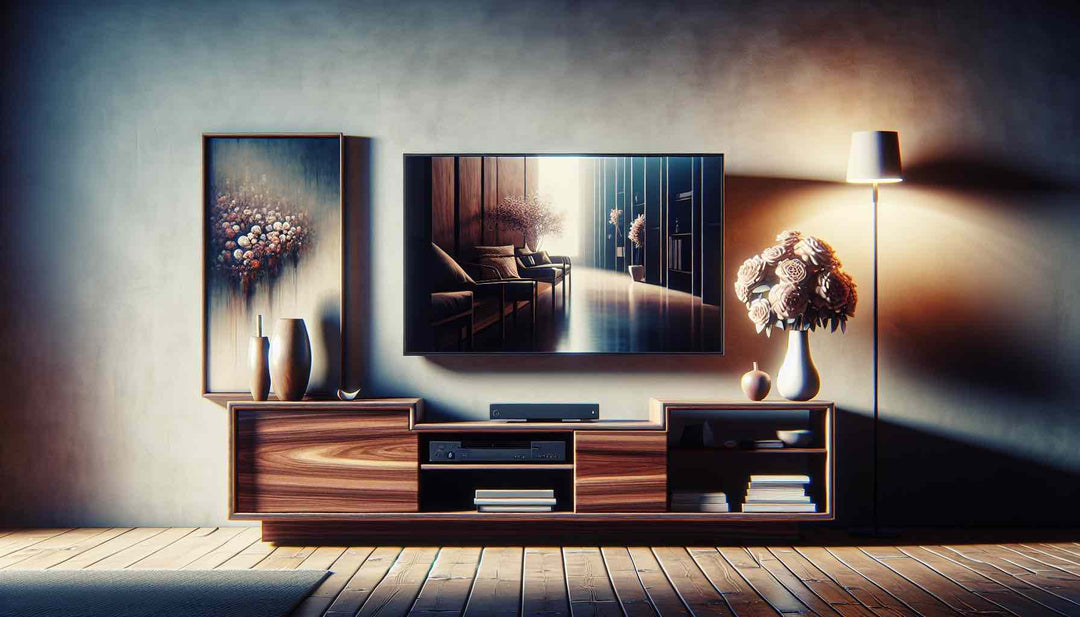How to Design Minimalist Home Spaces with Style & Comfort

Simplicity, space, and serenity: these are the pillars of a minimalist home. But how do you achieve this blend of stylish minimalism and comfortable living? This guide is about “how to design a minimalist home”. It offers clear steps to cut to the essentials and make each choice count. From furniture selection to color schemes, we’ll explore the art of less that’s more.
Key Takeaways
Minimalist home design fosters calm and order. It does this through less clutter, the use of negative space, a neutral color palette, and prioritizing only essential items. These items add value and purpose to the living space.
Choosing minimalist furniture means picking multi-use, functional, and timeless pieces. They should be set up to get the most natural light and create inviting spaces. This must be done while keeping an open, uncluttered feel.
Minimalism goes beyond home decor. It involves regular decluttering and organizing. It also involves adding hidden storage and letting go of extra items. These practices maintain the simplicity and peace of a minimalist space.
Understanding Minimalist Design Principles
The allure of minimalist decor lies in its ability to create a sense of calm and order. Minimalist design is about 'less is more.' It emphasizes life over things. This shift echoes modern values of sustainability and urban living.
Embrace the minimalist house concept. Follow principles such as restraint in decoration and essential items. Use geometric shapes and a monochromatic palette to foster simplicity. Remember, a minimalist home is tailored to what is most meaningful to you. It allows for a personalized minimalist room that is both useful and beautiful.
This approach has clean lines and a consistent, neutral color palette. It creates an atmosphere that is bright, airy, and very relaxing.
Embracing Negative Space
In a minimalist interior design, negative space is as vital as the objects that occupy it. It’s about the art of omission, where less becomes infinitely more. By not filling every corner, we create a minimalist space. It breathes and brings calm. It lets the room’s simplicity and materials shine.
Consider artwork that employs negative space, signaling personal style without overwhelming the senses. Embracing white space is not about emptiness. It’s about creating a space that speaks volumes through its uncluttered presence. The space provides floor space that invites peace into a minimalist living room.
Choosing a Neutral Color Scheme
The color palette of a minimalist room significantly influences the overall ambiance. Neutral colors, like whites, beiges, and grays, set a calm tone. They form a unified backdrop for your minimalist decor. Use shades from a single color palette, like a monochromatic one. Use them in different rooms. This creates a seamless aesthetic. It is tranquil and harmonious.
A limited palette with neutral tones is key to consistent minimalist design. It ensures your home feels unified and peaceful.
Prioritizing Only the Essentials
The core of minimalist living is to embrace only the essentials. Surround yourself with few things that hold value and purpose. Prioritizing the basics clears clutter. It also boosts mental well-being by cutting the stress and anxiety of chaos.
Create a minimalist home. Do this by carefully considering each possession. Choose to keep only those that add meaning to your life.
The Role of Functional Furniture in Minimalist Homes

Furniture is the core of any minimalist design. Form meets function in a very elegant way. In minimalist homes, every item must justify its presence by being useful. Unneeded objects and decorations have no place here. Emphasize investing in timeless, well-made furniture pieces. They outlast trends and fit the minimalist focus on fewer, better things. Such pieces not only conserve space but also add to the home’s aesthetic charm.
For example, wooden TV stands from JALG represent minimalist design's focus on form and function. They achieve this through non-obtrusive lines and texture. Remember, the furniture you choose should embody the minimalist design style and help create an uncluttered space that is a joy to be in.

Multi-Use Pieces
In minimalist design, multi-use furniture is paramount. Consider a 4-in-1 folding sofa bed. It can change from an ottoman to a bed. It maximizes your living space's utility without compromising its minimal look. Take an upholstered ottoman, for instance. It can be a comfortable seat and a coffee table. This shows the elegance of multipurpose furniture in a minimalist setting.
Choose multi-use furniture. For example, extendable tables and foldable desks make a space more functional. They keep it open.
Investing in Timeless Pieces
The investment in timeless pieces is an investment in the future of your minimalist home. Quality is key. Well-made furniture has a timeless design. It lasts and stays stylish despite changing trends.
Choose a classic sofa in neutral colors. It should have durable upholstery. It will be a versatile and long-lasting centerpiece for your living space. Similarly, a dining set includes a dining table. It's made from sturdy materials like wood or metal. It can withstand daily use and adapt to changing decor.
Furniture Arrangement Tips
In a minimalist home, arrange furniture to use as much natural light as possible. It is about creating inviting, useful spaces. Here are some tips to help you:
- Position furniture to let daylight in. Also, consider hidden lights to keep the minimalist look.
- Establish a focal point. It could be a minimalist TV stand around a TV or fireplace. This will create a useful and beautiful area.
- Choose pieces with a light look. They should also be the right size to keep things spacious.
To maintain an open space, direct traffic around seating areas. This is central to minimalist room design.
Decluttering Strategies for a Minimalist Lifestyle
Embarking on the minimalist journey often begins with the liberating process of decluttering. Start small to build momentum, focusing on one room at a time to avoid feeling overwhelmed. Decluttering is more than just tidying. It’s a chance to reflect on your values, tastes, and life goals. You make sure each item in your home fits with your minimalist ethos.
This clears your space. It also clears your mind. It sets the stage for a refreshing and sustainable minimalist lifestyle.
Sorting and Organizing
The journey to an uncluttered space begins with effective sorting and organizing. The KonMari Method and others encourage intentional and joyful living. They do this by reducing possessions. Start with less challenging areas to gain confidence for tackling more demanding tasks.
Taking photos of your home can help you view spaces objectively. You can spot areas where clutter needs attention. After decluttering, put incoming paperwork in a specific area. This helps keep things organized and minimal.
Hidden Storage Solutions
In minimalist interiors, hidden storage solutions are essential for maintaining a sleek aesthetic. Furniture has dual purposes. For example, ottomans have storage. They cleverly add function without sacrificing style. Improve your kitchen with features like adjustable shelves and hidden drawers. They make storage and access easier, ensuring everything has its place.
Use tall shelves to draw the eye upward. They use vertical space and keep the floor clear. Remember, these storage solutions should integrate seamlessly into your design. They should optimize organization without compromising on minimalist principles.
Letting Go of Unnecessary Pieces
The act of letting go is a powerful aspect of minimalist living. Regularly assess your space for chances to simplify and stay true to minimalism.
Getting rid of unneeded items frees up energy. It frees it for hobbies and relationships. Embrace a flexible form of minimalism. It avoids rigid rules, like owning a set number of items. It allows for a tailored experience that suits your unique lifestyle.
Minimalist Decor Techniques

Minimalist decor is not about stripping away character; it’s about refining it. Techniques, like balancing proportion, help. They also involve choosing a single functional focal point, like a rug or table. They keep minimalist design simple and useful. Adding personal touches. Such as, a cherished piece of furniture or meaningful artwork. They add a unique touch to your minimalist decor
Enhance your simple style with strong shapes and materials. Personalize it further with things like tastefully arranged flowers or creatively placed mirrors.
Selective Accessorizing
Accessorizing in a minimalist home is an exercise in restraint and intention. Each addition should offer personality. But, it should not disrupt the minimalist look. For example, a coffee table should have storage. And, an accent chair should have a timeless design.
Mirrors can be both practical and decorative art. This is especially true for those with unique frames and shapes. They reflect your style in a minimalist interior.
Incorporating Different Textures
Textures play a subtle yet crucial role in adding depth and interest to a minimalist space. Adding varied textures enhances the sensory feel of a minimalist room. Mixing textures within a minimalist palette can add interest. It does so without overcomplicating the design.
Natural textures, like wood, textiles, and plants, are all examples of natural materials. They blend well with a monochromatic color scheme. They add warmth to a minimalist setting.
Minimalist Lighting Choices
Lighting is a defining feature of minimalist decor. It serves both practical and aesthetic purposes. Choose light fixtures that match the clean, uncluttered look of the space. It is known for simple geometric shapes. Accent lighting can draw attention to specific areas or objects. It's common to use a straight floor lamp for this. It adds to the minimalist design without creating clutter.
Choose materials like metal and glass for your lighting fixtures. They will reflect and enhance the room’s light, adding to the modern finish.
Creating a Cohesive Minimalist Interior

Creating a simple, cohesive interior is about more than just looks. It’s about making spaces that reflect your life and help your daily routines. Interior designers learn about your habits. They use the insights to make a minimalist space that fits your life. This ensures each room flows seamlessly in both design and function.
Choose versatile furniture. For example, choose a TV stand that matches any style. They ensure each space stays true to the minimalist aesthetic.
Consistent Design Elements
Consistency is the cornerstone of a unified minimalist interior. Here are some key elements to consider:
- Use the same materials, like wood or steel, for different parts. This keeps the look cohesive.
- Choose a neutral paint color throughout the home to create a sense of unity.
- Select furniture that reflects a similar style to enhance the overall aesthetic.
- Add a striking focal point to add visual interest.
By adding these elements. You can make a cohesive, good-looking minimalist interior.
Minimalist design should have simple forms and clean lines. These elements should be dominant and create a single, cohesive narrative in your interior. They should reflect a minimalist style.
Balancing Function and Aesthetics
In a minimalist home, balancing function with looks is key. It creates a space that is both comfy and pretty. Furniture and elements should focus on basic forms and function. They should avoid extra details that detract from the minimalist look.
A functional minimalist space needs efficient storage and good lighting for efficiency. It also needs colors, textures, and decor for beauty.
Curated Artwork and Personal Style
Your home should be minimalist. It should reflect your unique personality. It should do this through curated art and personal style. Edit personal items like photos and souvenirs to create interesting focal points. This prevents clutter. Selecting personal artwork reflects your style. It also adds a special touch to your minimalist space.
A single motif or theme ties spaces together. It allows for personal expression within the minimalist framework.
Maximizing Small Spaces with Minimalist Techniques

Simple, new techniques work best in small spaces. They improve functionality, looks, and quality of life in limited square footage. Small spaces challenge us to rethink traditional design. They focus on quality over quantity, pushing the limits of what is possible. They also encourage personal expression.
Embrace these challenges. See them as chances to use minimalism creatively. You can use it to make even the coziest corners feel spacious and inviting.
Clever Use of Mirrors
Mirrors are a minimalist’s secret weapon. They create the illusion of extra space. Placing large mirrors strategically, especially in small areas, can trick the eye. It makes a room seem bigger than it is. Position mirrors opposite windows. This will make a room look bigger and amplify natural light and views. It will enhance the feeling of space in a minimalist interior.
In darker corners, mirrors can reflect artificial light. This light brightens the area and adds to an open, airy feel.
Floating Shelves and Vertical Storage
Where floor space is limited, floating shelves help. They rise to the occasion, offering vertical storage solutions. These storage options keep the floor clear. They add to the minimalist look and keep the room feeling open.
In places like the dining room, floating shelves offer practical storage. They do not clutter the space, so the minimalist decor remains undisturbed.
Choosing the Right Scale of Furniture
Picking furniture that fits the room's scale is crucial in a small space. Oversized pieces can quickly make it look cluttered. Good proportions in furniture design create harmony. They also prevent overcrowding. This is key for keeping minimalist charm in small rooms.
Maintaining Your Minimalist Home
The minimalist aesthetic extends beyond the initial design. It needs ongoing dedication to keep its clarity and simplicity. Regular tidying, cleaning, and decluttering are key. They maintain your minimalist space. They stop the buildup of items and dust. These things can detract from the minimalist design aesthetic.
Simple daily habits keep your home tidy. They include prompt dishwashing and evening tidy-ups. You need regular audits. You also need seasonal decluttering. These will keep your home aligned with minimalism. They make room for purposeful new things.
Daily Habits for a Tidy Home
Daily habits for a tidy home are key. They are the foundation of a minimalist lifestyle. Start each day with a morning routine to tidy up quickly. This helps focus your mind and keeps your environment minimalist and pristine. Create a clutter-free zone in your home. Expand it bit by bit. Keep it tidy every day.
Commit to keeping floors clear and surfaces uncluttered. Put only a select few decorations in view. Store the rest out of sight. By decluttering one area at a time, like a countertop or a shelf, you can create a ripple effect. It will motivate you to keep decluttering the whole house.
Seasonal Decluttering Sessions
Seasonal decluttering sessions are vital in the minimalist journey. They offer a scheduled chance to reassess and refine your belongings. The drawer-emptying method is an example. It ensures that only essential items are returned to their place. They reinforce the minimalist ethos. A timer can help with quick decluttering sprints. Use it when filling a bag with items for donation to thrift stores. It can also remind you to stick to living with fewer, more meaningful things.
Start with small tasks. For example, organize for just one minute or discard one item each day. This keeps up momentum and prevents the task from being overwhelming.
Embracing Minimalism Beyond Decor
Embracing minimalism is more than a design choice. It’s a lifestyle that touches every part of your life. Decluttering areas of your life each month creates a plan for intentional living. You do it systematically. This reduces distractions, letting you give your best to others.
Embracing minimalism brings clarity and focus. It simplifies the path to finding and pursuing your most important goals and dreams.
Summary
As we conclude this guide, remember that minimalist home spaces are more than a design trend. They represent a choice to live simply and intentionally. You create a home that is stylish and comfy. You do this by using minimalist design. You invest in functional furniture and declutter regularly. You also use minimalist decor techniques. This home is a true reflection of your values. Embrace minimalism. It brings peace and freedom to your life.
Frequently Asked Questions
How can I maintain a minimalist design if I have a lot of possessions?
To keep a minimalist design with many possessions, declutter. Focus on only the essentials. Use hidden storage and regularly reevaluate your belongings. This will help you maintain an uncluttered space despite having many possessions.
Can minimalist homes still be warm and inviting?
Yes, minimalist homes can still be warm and inviting. They do this by using natural materials, textures, and personal touches. Warm tones and personal items can make a minimalist space cozy.
What is the best way to arrange furniture in a minimalist room?
Arrange furniture to: get as much natural light as possible. Create a focal point. Choose light pieces. They maintain an open and inviting space in a minimalist room. This will help in achieving a balanced and functional layout.
How does minimalist design impact mental well-being?
Simple design can improve mental well-being. It does so by reducing stress and anxiety. It creates a sense of calm and order in the living space.
Are minimalist interiors limited to white and neutral colors?
No, minimalist interiors are not limited to white and neutral colors. A single-color scheme can maintain a minimalist design. It can also allow for personal expression.
















